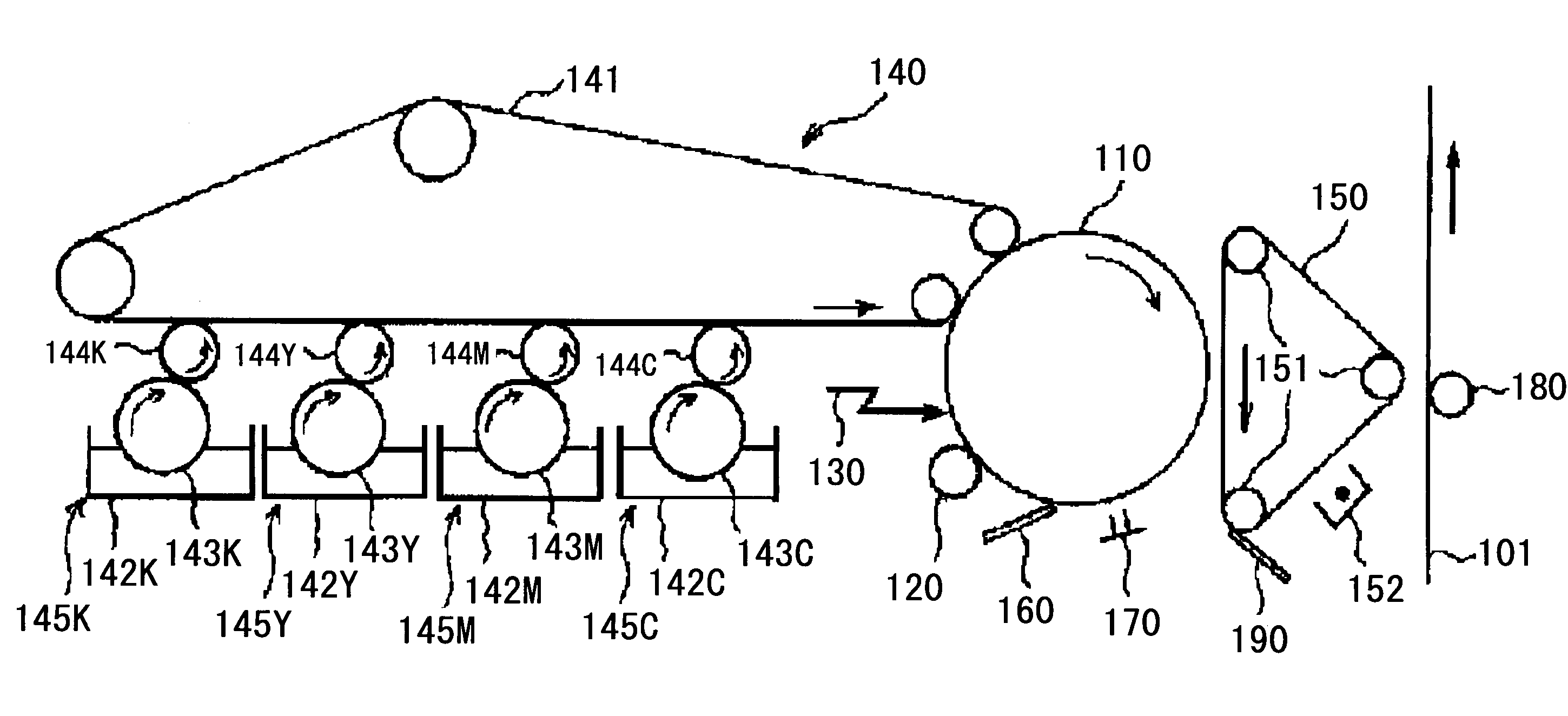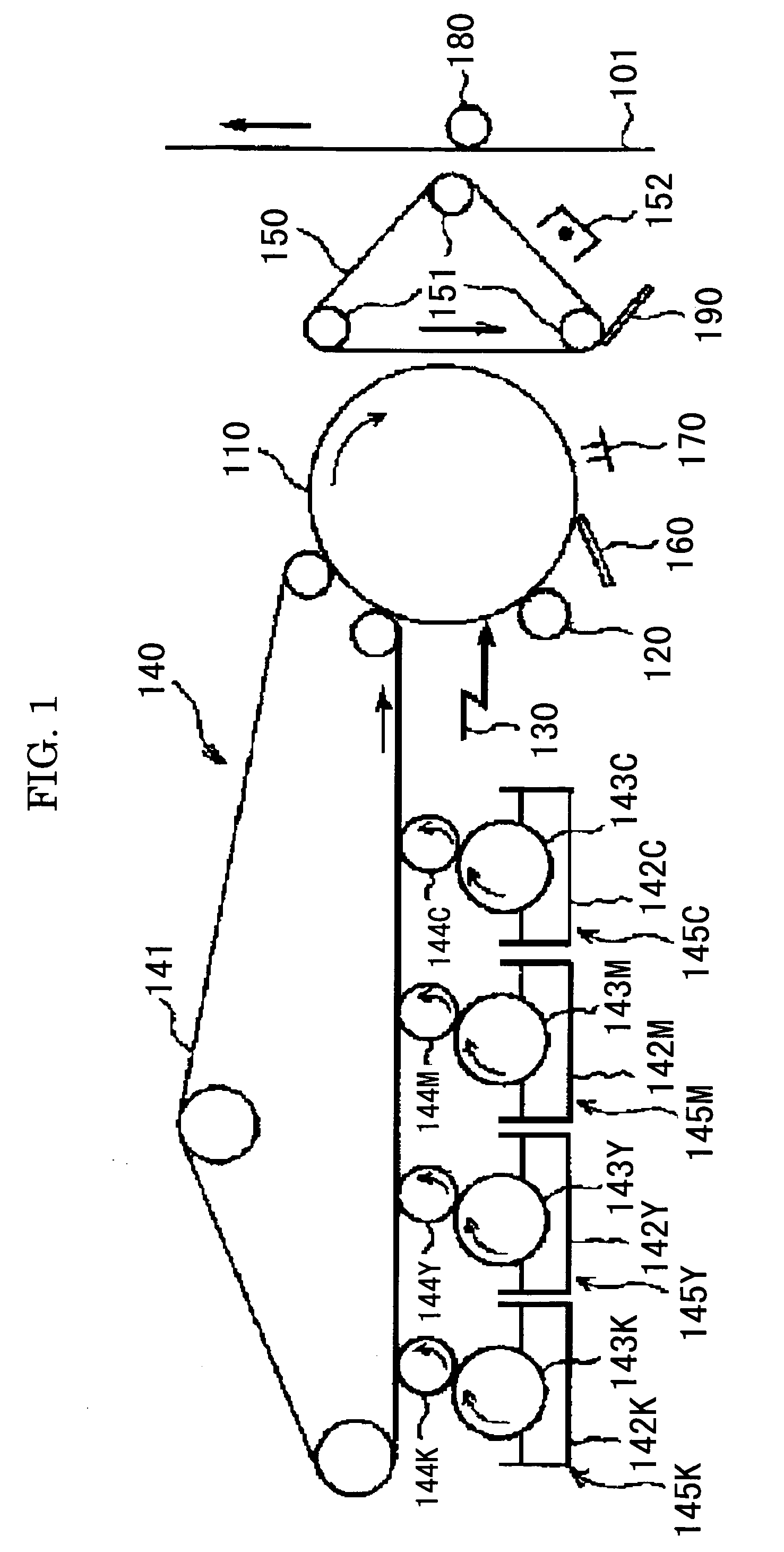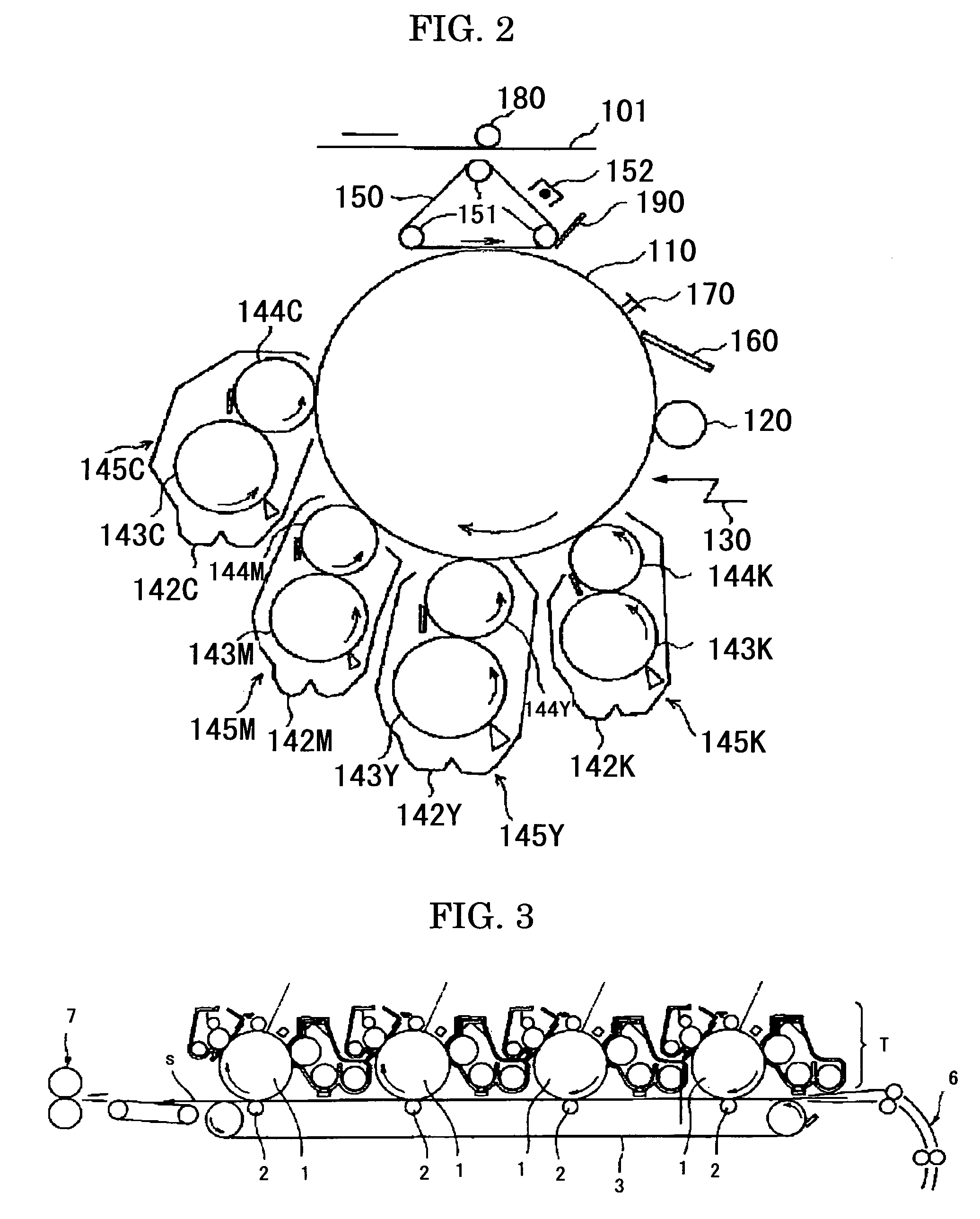Toner for electrophotography and image forming apparatus
a technology of electrophotography and image forming apparatus, applied in the field of toner, can solve the problems of difficult uniform dispersibility of colorants and charge controlling agents, low yield, and inability to select toner materials, and achieve the effect of little background smear
- Summary
- Abstract
- Description
- Claims
- Application Information
AI Technical Summary
Benefits of technology
Problems solved by technology
Method used
Image
Examples
example a
(Evaluation of Two-Component Developer)
[0393]When images formed with a two-component developer were evaluated, as shown below, by using a ferrite carrier coated by a silicone resin having an average thickness of 0.5 μm thereby having an average particle diameter of 35 μm, 7 parts by mass of each color toner were used relative to 100 parts by mass of the carrier and uniformly mixed using a tabular mixer in which a container was rolling such that the contents therein could be stirred such that the contents were charged to thereby prepare a developer.
(Production of Carrier)
[0394]
Core materialMn ferrite particles5,000parts(mass average particle diameter: 35 μm)Coat materialToluene450partsSilicone resin SR2400450parts(manufactured by TORAY DOW CORNING CO., LTD.)Aminosilane SH602010parts(manufactured by TORAY DOW CORNING CO., LTD.)Carbon black10parts
[0395]The coat materials stated above were dispersed with a stirrer for 10 minutes to prepare a coating solution. The coating solution and th...
example a-1
[0415]The following paragraphs explain the detailed method of producing a toner in due order from (1) to (12), the toner is a toner which comprises one or more inorganic fine particles and is produced by dissolving or dispersing a toner composition which includes a binder resin containing a modified polyester resin capable of reacting with a compound having an active hydrogen group, colorants, and a releasing agent in an organic solvent, further dispersing the toner composition solution or the toner composition dispersion liquid in an aqueous solvent containing resin fine particles to be subjected to an elongation and / or a cross-linking reaction, removing the organic solvent from the obtained dispersion liquid, and washing and drying the dispersion liquid.
[0416](1) Production Example of Inorganic Fine Particles
[0417]An initial core material solution SiCl4 was injected to a burner for forming the core of inorganic fine particles with an Ar gas as a carrier gas at a volume flow rate o...
example a-2
[0451][Toner 2] was obtained in the same manner as Example A-1 except that the amount of [particulate emulsion 1] was changed to 65 parts in the preparation of the aqueous phase, and the amount of [inorganic fine particles 1] was changed to 34 parts in the preparation of the oil phase. Table 2 shows the evaluation results of the obtained toner through the use of the individual image-evaluation systems.
PUM
| Property | Measurement | Unit |
|---|---|---|
| particle diameter | aaaaa | aaaaa |
| dielectric constant | aaaaa | aaaaa |
| volume average particle diameter Dv | aaaaa | aaaaa |
Abstract
Description
Claims
Application Information
 Login to View More
Login to View More - R&D
- Intellectual Property
- Life Sciences
- Materials
- Tech Scout
- Unparalleled Data Quality
- Higher Quality Content
- 60% Fewer Hallucinations
Browse by: Latest US Patents, China's latest patents, Technical Efficacy Thesaurus, Application Domain, Technology Topic, Popular Technical Reports.
© 2025 PatSnap. All rights reserved.Legal|Privacy policy|Modern Slavery Act Transparency Statement|Sitemap|About US| Contact US: help@patsnap.com



